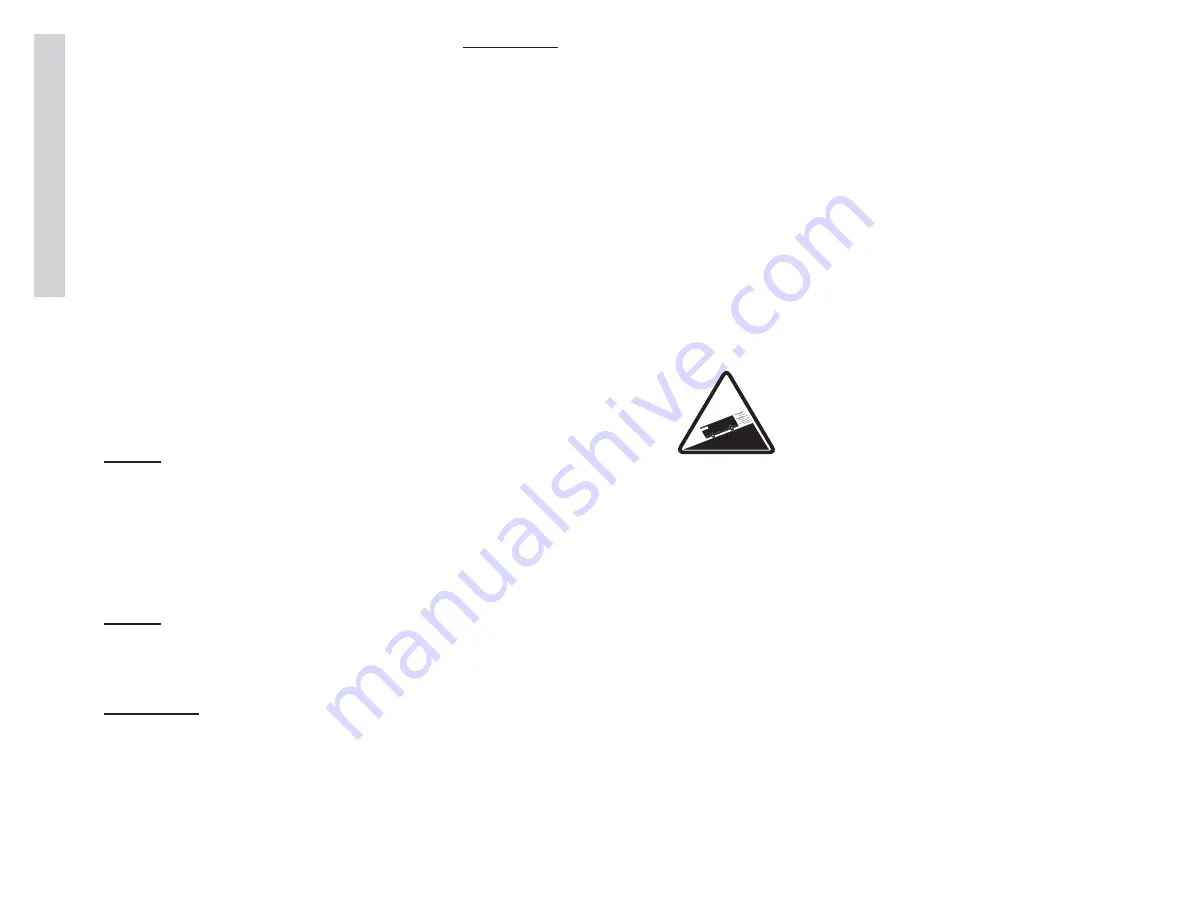
12
D
ri
vi
ng
&
S
af
et
y
-
2
2012 Trip
For more information about child safety
seats, booster seats, inspection/fitting
stations in your area, seat belts, air bags,
and other highway safety issues, call the
DOT Vehicle Safety Hotline at:
1-888-327-4236
.
A certified child passenger safety
technician can check your installation and
answer questions. To find a technician
or an inspection station near you, go
to
www.nhtsa.gov
, click on the child
passenger safety icon, and then click on
the Fitting/Inspection Station link, or go
to
www.seatcheck.org
.
The child safety seat can be positioned in
two places: the front passenger (co-pilot) seat
and forward facing permanently mounted
booth dinette seat equipped with safety belts.
NOTE:
Individual states and Canadian
provinces may have laws that can
exceed the requirements as described
in this section. It is the responsibility of
the owner to know and comply with the
laws in the state or province in which
the motorhome will travel.
NOTE:
Use of a safety or booster seat in the
front seat may be prohibited in some
states and Canadian provinces.
WARNING:
Do not transport children unrestrained.
Infants must be placed in approved
safety seats - small children must be
restrained in child safety seats. Do not
use a single seat belt on more than one
child. Failure to comply with these rules
can lead to injury or death.
WARNING:
Because many styles of safety and
booster seats are available, refer to the
safety seat OEM manual for proper
installation and how to properly install
and secure the safety or booster seat.
Seat Belt Care:
Keep the belt clean and dry. Clean with mild
soap and lukewarm water. Do not use bleach,
dye or abrasive cleansers that may weaken
the belt material. Periodically inspect belts for
cuts, frays or loose parts, and replace damaged
parts. Do not disassemble or modify the
system. Replace the seat belt assembly after a
severe impact, even when damage is not
DrIvIng tIpS
The motorhome is a complex
vehicle that requires increased
driving awareness because
of its size and various components. Turning
radius will be much wider than that of a
standard automobile due to increased length.
Pay close attention to the perimeter of the
motorhome including front, sides, rear, roof
and undercarriage. Ensure the surrounding
area is clear of obstacles. Use the mirrors
to observe traffic conditions as well as the
exterior including tires, bay doors, blind
spots, etc.
Use a push-pull method of steering, with
both hands parallel on the steering wheel.
The motorhome is considerably heavier than an
automobile and has a higher center of gravity.
These factors will necessitate advanced reaction
time. Swerving and sharp cornering performed
high speeds could result in loss of control.
Keep size and weight of the motorhome in
mind. Drive with increased caution to avoid
situations that might require quick momentum
changes. Increase reaction time by paying
attention to traffic and road conditions 12 to 15
seconds ahead.
The motorhome will travel safely and
comfortably at highway speed limits.
However, it takes more time to reach highway
speed. When passing another vehicle, allow
extra time and space to complete the pass due
to increased length.
Manually shift to a lower gear when
descending a long hill. Begin the descent at a
slow speed. Do not allow the motorhome to
gain momentum before trying to slow down.
Use the exhaust brake in conjunction with
the service brakes to help maintain a slow,
safe descent. The transmission and engine
will help control downhill speed and can
extend the service life of the brake lining.
Distance required to stop the motorhome is
greater than an automobile. Practice stopping
away from traffic to get the feel of distance
required to stop.
Note weight limits of bridges before
crossing. Signs should be posted at bridge
entrances. Check posted height of all
overpasses and situations where overhead
clearance is limited. Keep in mind road
surfaces may be repaved or packed with
snow; therefore, the actual posted clearance
would be less in such conditions.
Use the pilot seat controls to comfortably
position the seat. Stay seated and adjust the
outside mirrors if necessary to gain a clear line
of vision down both sides of the motorhome.
Содержание Trip 2012
Страница 1: ...2 0 1 2 B YHOL I D A YR A MB L E R O w n e r s Ma n u a l...
Страница 13: ...Notes...
Страница 45: ...40 Driv ing Safety 2 2012 Trip Weight Record Sheet...
Страница 51: ...46 Driv ing Safety 2 2012 Trip Notes...
Страница 138: ...133 W ater Sy stems 6 2012 Trip Water System Diagram 040487va...
Страница 139: ...134 Wat er Sy stems 6 2012 Trip Notes...
Страница 151: ...146 Pro p ane Sy tems 7 2012 Trip Notes...
Страница 173: ...168 Ho us e Electr ical 8 2012 Trip Notes...
Страница 190: ...185 Chassis Electrical 9 2012 Trip Engine No Start Flow Chart...
Страница 191: ...186 Ch as s is Electr ical 9 2012 Trip Notes...
Страница 237: ...232 Ch assis 10 2012 Trip Notes...
































